#nurbanu valide sultan
Explore tagged Tumblr posts
Text
i swear they renovated the heck out of the palace between mck s1 and s2 bc i recognize none of the rooms or the halls now lol
#the valide sultan's chamber esp. that is not the one hurrem nurbanu safiye halime and s1 kosem stayed in#muhteşem yüzyıl#muhtesem yuzyil#muhtesem yuzil kosem#magnificent century#magnificent century kosem#mc tag
13 notes
·
View notes
Text
Power and status of ottoman princess
Title and honorifics
Before the rule of sultan Bayazid II every high ranking woman were called Hatuns,including mother,sisters,aunts and daughters, however thier social standing was naturally higher than non imperial women. The way to adrress them was Hatun that was used after their given name,for example, Gevherhan hatun,daughter of Mehmed the coqueror or effendi that would have similar meaning as mistress.
After accession of Bayazid II his daughters and granddaughters were given title of sultan,however non of his living sisters or aunts got the honor. Later on proper way to adress them woulf become “Sultanim”, which would mean “my sultan”,or again “effendim” by other members of imperial family. I would like to underline that contrary to what wikipedia states, there is no records that I know,where princesses where called with “Devletlu İsmetlu” like Valide sultan and Haseki sultan were.
The term “sultana” that was made more feminine by Europeans never existed in ottoman language.
Family, Marrige and Issues
I want to start discussing their family with brothers,it’s widely known fact that before suleyman there was “once concubine,one son” tradition therefore if shehzade/Sultan had full-sisters they were all older,that is one way to deduce if princess of unspecified mother was full sister of half sister of reigning sultan. Naturally Shezades had closer relationship to their full sisters as they were leaving with him and their mother,when he was appointed as governor of princely province. Their latter life would be spent in their brother’s harem before marriage.
being half sister of sultan did not automatically mean that their relationship would have been stained,however mostly,princess would favour full-brother over half,but were treated by same respect regardless who ascended the throne. It was different case when imperial princess had no full brother at all,for example Sah Huban, she had very close relationship with Suleyman,even closer than his deeply respected full sisters.
Their marriages,much like any other princesses of any country, was political,arranged by their parents to strengthen standing of their father or brother,for example daughters of Selim I were firstly married to powerful politicians,so their father would have supporters in his rebellion,while their second marriages were arranged to help Suleyman in his early reign. Their husbands were usually much older than them, therefore marital life was likely not consensual and in no way their choice. For example,Rustem paha,husband of Mihrimah,was same age as Hurrem,her daughter’s fate was even worse as she had to marry peer of her own grandfather,however given the fact that they had 8 children,marriage can be considered successful. After the Marriage princesses were getting their own little “Harrem”,where they had great rooms for themselves and their servants,where even their Husbands needed permission to enter and even refuse to have sexual intercourse with them,sometimes their marriage could end unconsumated and after some time princess could use another of their privilege-divorce. Reason of divorce could have been different: Personal attitude,mistreatment,political move or adultery. It was made clear,especially by Suleyman,that imperial princesses were full-fledged members of imperial family so they ranked higher than their husbands,therefore having relationship with other women was their humiliation,which would lead to divorce, after which they would retire in old palace and could refuse to remarry again.
Only their first degree descendants would be given imperial titles.
Daughters- Hanimsultan(with Ayse Humashah as exception)
Sons-Sultanzades. They ranked even below non-sultan imperial consorts and some of the highest ranking harem servants.
Hierarchy and Power
They actually had equal standing in ottoman hierarchy. As female members of dynasty they had the same status and privileges,were reffered as sultans and often received relative stipend.( Which was on average 200 akche a day, for comparison, Valide sultan had around 2000-3000 depended on time period, Haseki sultan 1000-1100(Hurrem as only exception,who got stipend of Valide sultan ) Gulfem,who was almost regarded as member of family herself was recieving 150, Nurbanu’s trusted friend and one of the highest ranking non-sultan woman ever Canfeda received 200, Mahidevran only received 40 and avarage stipend of cariye was 2-4) Besides, sisters of sultans were technically daughters of sultan, though the deceased one, still they were treated with great respect much like their late father. However, birth order was important thing in ottoman society so younger sister respected older and bowed to them as well as nieces bowing to aunts regardles of their martial or fianacal status. Therefore saughters of sultan,as nieces, were calling sisters of sultan,as aunts, “effendi" out of respect.
In conclusion, even if they had same social standing, sisters of sultan were still bit ahead daughters of sultan formally.
However, Granddaughters, Nieces and cousins of sultan,despite the same rank, were less prestigious.
Despite their relative social status and order of birth their actual power was dependent on several factors:
1. Their relationship with Padishah,Valide sultan or Haseki sultan. They had higher rank and much more evident political power, they still needed their permissions about major decisions,even if it were their right, so being on good terms with them was a good move. Half-sisters naturally were not as favoured as full-sisters by Valide sultan,but with padisah had more options, they could have been supportive, religious, charitable and obedient another way was sending beautiful, well-educated concubines,who could have become Haseki(after 1533), that is when their good relationship begun,most of Sultanate of women memebers were raised at their court and remained in favour after they became Valide Sultans, in that case even some of the Padisah’s expressed gratitude and gratefulness for raising their mother, (such occasion was Ahmed I’s attitude towards her aunt which I will discuss below.), they could also donate money to wars, harem managements and charitable projects, either all their own or assist Haseki sultan.
2. The second way to gain power was wealth. Money opens many doors and it was like that in the past. They could establish some business or even receive bribes.
3. They could also gain power with marriages, it was not only beneficial for their brothers,but for them as well. If their husband had a high rank, they could keep an eye on the political situation and act accordingly, they would use that influence to assist their brothers, who,In turn, would be extremely grateful for their support.
Comparison between Ottoman and European princess
Status- Status of European princesses depended on their marriage. Being princes was not guaranteed power,but only a formal status. For example, Margaret Tudor was below prince Henry in rank but when she married by proxy to Scottish king, she outranked him and demonstrated that by walking in front of him. On the other hand, another sister Mary married to Charles Brandon and was Duchess of Suffolk ever since,while Status of Imperial princess remained the same.
Opportunity- European princesses could have become Queen consort and Queen mother and veiled immense power, while imperial princesses could never become Haseki or Valide.
Marriage- Ottoman princesses were usually older when married and outranked their husbands,while European princesses were always below their husbands. Sultan could also refuse remarryin,while European princesses had no such right
Freedom-European princesses were less limited by social customs.
Consummation-Ottoman princesses had the right to refuse Consummation without a deadline, while European princesses had to Consummate marriage even if they were twelve, unless of course parents arranged it other way.
Divorce - it was right of ottoman princesses to divorce their husbands,while for European princesses it was a rare privilege.
Despite so many differences, one thing was same- they had a loveless purely political match .
Powerful ottoman princesses
Here I Rank ottoman princesses,who had considerable power and influence, sorted by date of birth.
P.S gifs are from MC and MC:K,but some characters might represent different historical figures.

Fatma sultan
Fatma may have been the second child of Ayşe Hafsa and Selim I . She was born in Trabzon around 1492 and spent her childhood there. When her younger brother Süleyman received his own princely province in 1509, she probably accomponied him to Caffa with their mother.
She was married in 1516 for the first time,but it soon ended in divorce and Fatma returned to Manisa. She gained considerable influence as she was most likely the sister,who was recorded to be in Manisa, helping mother manage harem and protect Suleyman from their father. If legends are true and Selim was indeed trying to kill Suleyman,that she had hands in saving him. Most likely, Fatma and her mother were instructing young sukeyman,how not to deserve the wrath of father and covering his mistakes. After Suleyman ascended the throne, she was married again to Kara Ahmed pasha in 1522. Marriage lasted long,but did not produce any child, so either fatma was infertile (Kara Ahmed pasha had two daughters that are disputed to be fatmas,but they were likely from previous marriage) or the match was not happy and Fatma refused sexual intercourse, however considering her reaction to his death, it was most likely the former.
According to what we have Fatma seems to be quite free spirited as depicted in the series. She was wealthy, cunning and might have been fond of parties. She had hands in financing some of her brother’s campaigns and even won the favour of janissrries. However, in 1555 Kara Ahmed pasha was executed by the efforts of Mihrimah and Hurrem and Fatma was married to eunuch and banished from the capital for hed intrigues against them She died either in 1557 or 1573.

Sah huban sultan
Daughter of Selim I and unknown concubine, born in 1500. As she has no full brothers, she was very close to Suleyman and their father, with whom she spent most of her childhood. Considering Suleyman’s great respect for her, Sah was likely a supporter of him and helped to deal with Selim I.
She was married in 1523 to well-educated and intelligent Lutfi pasha with whom she shared religious thoughts and beliefs. Marriage, however did not seem to be successful the couple only had one daughter and Sah refused to have a sexual relationship ever since. She was very pious, intelligent,outspoken and fierce in nature. In the only description of her daughter Esmahan Burnaz, it is said that she was arrogant and demanding and it was Shah’s domineering attitude in the family that was blamed for it, as by this “she had ruined the role of woman” in the child’s mind. However,that was recorded by the European ambassador only, who had never met any of them and probably heard some rumors or made it up after an ugly end of their marriage.
In 1541, Lutfi pasha punished a prostitute for adultery by mutilating her genitals.Şah could not tolerate the humiliation and mutilation of a woman without a word, which is why she got into an argument with her husband, who hit her . Şah had Lutfi pasha beaten up and immediately asked his brother to allow the divorce. Süleyman then exiled him. Şah remained with her brother in Istanbul for the rest of her life and supported the wife of Süleyman, Hürrem, in carrying out her construction projects. She lived a modest life in the Old Palace and devoted all her time to charity and religion. Shah had excellent relationship with Hurrem and Mihrimah and in my opinion, close bond between aunt and niece helped young sultan to shape her mind and characteristics. She died in 1572 and was buried in her father’s complex.

Mihrimah Sultan(1522-1576)
Her life is very much known. She was the most powerful imperial princess in the empire, so I will just list some of her achievements:
1. Her stipend was 600 akches a day during the reign of three different Sultans. it was three times as much as regular pirncess
2. She had correspondence with Catherine de Medici and other foreigner diplomats, who would often send her gifts to help them in some political affairs.
3. She financed some of Suleyman’s campaigns all her own
4. She built a whole fleet of 400 ships.
5. She had three palaces and two mosques
6. She served as sole de facto Valide from 1558 to 1566 and shared it with Nurbanu from 1566 to 1574.
7. After the death of Bayazid Mihrimah banned everyone from laughing and sent back clothes to Suleyman and Selim who were secretly planning a grandiose wedding, that was cancelled by Mihrimah and instead a very plain ceremony was held.
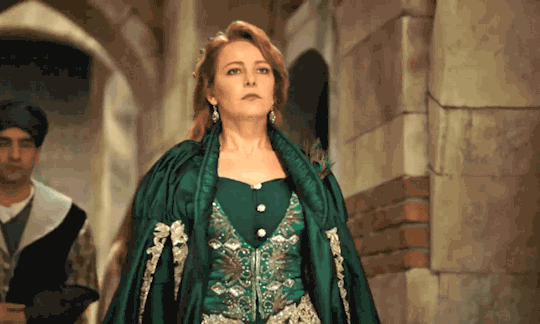
Humasah 1543-c.1582 or later
She was a posthanous daughter of Shehzade Mehmed and despite being only a daughter of prince, she was given the same privileges,but greater power, as any other sultans. She was one of two favourite grandchildren of Hurrem and Suleyman. She married three times,but the source of her power was a good relationship with Sultans. She was the one who raised Safiye and gifted her to Murad, so her power reached it’s peak during his reign.
She financed many construction projects,but was buried in a mosque that was built by Hurrem and Suleyman for her father.

Ayse Humasah 1543-1594.
Daughter of Mihrimah sultan and Rustem pasha, she was practically the same as her cousin with whom she shared many things started from date of birth and ended with their name. Ayse Humasah was the only woman born to an ottoman princess,who was herself addressed as sultan and her children were considered members of the dynasty. She was married two times and her influence was extremely great during the reign of three Sultans. Her power reached it’s peak, when her husband was appointed a grand Vizier and she had hands in very major political decision.
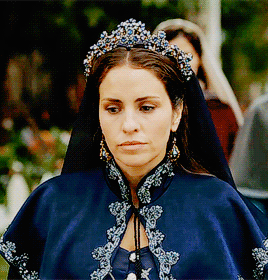
Gevherhan Sultan. 1544-after 1526.
Eldest child of Nurbanu and Selim. She was married to Piyale Pasha, an admiral who died in 1578 and she was remarried in 1579. She was one who raised Handan and gifted it to the prince, for which not only Handan was grateful, but her son Ahmed as well, who after his accession gifted very expensive furs to Handan, Gevherhan and Safiye. The second gifts were given to Handan and Gevherhan only,which indicates that unlike Safiye,she never fell from his favour. Peak of her power was from 1598 during her husband’s grand vazirate. She did a lot of charity in her life.

Ismahan sultan 1545-1585
Daughter of Selim and Nurbanu,she was married to Sokollu Mehmed Pasha and Through her husband and her own rank, Esmehan was the most influential sultana of the empire for years. In wealth, only her aunt, Mihrimah, could overtake her, but in influence, almost no one could. She constructed several projects and had foreign diplomatic affairs, most notable her correspondence with Catherine de Medici. She had a very artistic and dramatic personality, often throwing parties and shows. She was recorded to be very much alike Hurrem,both of them were short, not conventionally beautiful,but very intelligent. She was heavily involving herself in politics with her mother.
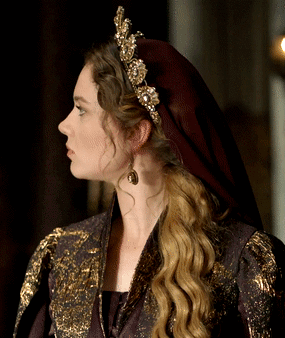
Burnaz Atike Sultan
Sultan Atike was born in 1614 or 1615 and although some sources consider her to be the daughter of Kösem, she was certainly not her child. That can be supported by the fact that she supported Turhan’s rebellion and had a good relationship even after kosem was killed. She was one who raised Turhan and remained in friendly terms for both Turhan’s gratitude and their shared politican views. Atike was noted to love children very much,but had none on her own, so she was involved in raising her nephew,who regarded her as second mother and listened to every of her advice.
She died around 1570.
I hope you liked it, I think it’s unfair to only talk about Mihrimah,while there were so many powerful and intelligent Princesses. I did not talk about Esma sultan as she was in later centuries and I am not fond of her times.
Which ottoman princesses are you favourites?
If i accedentaly missed something out you can ask it in comments
#historical drama#period drama#history#sultanas#valide sultan#medieval women#nurbanu sultan#hurrem sultan#mihrimah sultan#safiye sultan#kosem sultan#turhan sultan#magnificent century#magnificent century kosem#mc: kosem#sultanate of women#sultan suleyman#haseki hurrem sultan#ottoman history#ottomanladies#ottoman empire#15th century#16th century#17th century
140 notes
·
View notes
Text
Sultanate of Women (1520-1683)







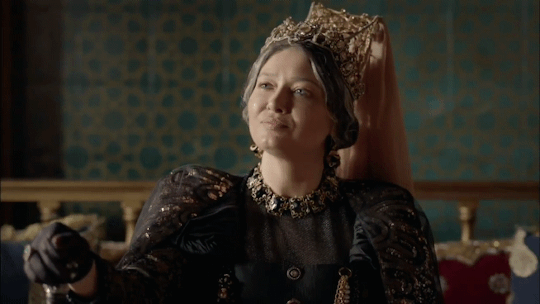

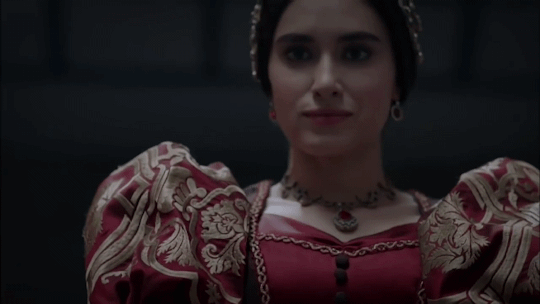
#history#magnificent century#muhteşem yüzyıl#ottoman#sultanas#ottoman sultanas#ottoman history#ottoman valide#valide sultan#woman in ottoman empire#woman in history#sultanate of women#sultanate#haseki nurbanu sultan#haseki#haseki sultan#haseki hurrem sultan#malika safiye sultan#safiye hatun#safiye sultan#hurrem sultan#aleksandra hatun#afife nurbanu sultan#nurbanu sultan#cecilia venier baffo#valide kosem sultan#magnificent century kosem#baş haseki turhan sultan#turhan sultan
67 notes
·
View notes
Text





Naibe-i Saltanat, Valide-i Padişah Halime Sultan Hazretleri
#halime sultan#valide sultan#muhteşem yüzyıl kösem#muhteşem yüzyıl#magnificent century#popular#keşfedildi#keşfet#hürrem sultan#nurbanu sultan#ottoman#history#sultaness
23 notes
·
View notes
Text
A Magnificent Century spinoff about young Safiye with Nurbanu as Valide Sultan would be awesome. Please make it happen, it's not too late.
I still wish that we’d gotten more of Safiye vs. Nurbanu. Even if solely in terms of character arc and development.
#safiye sultan#safiye hatun#nurbanu sultan#valide nurbanu sultan#magnificent century#muhteşem yüzyıl
9 notes
·
View notes
Text




So Mahidevran actually does explicitly acknowledge the possible danger Isabella poses to her (and Mustafa), but she goes to show her to Hürrem and give her a hand of support anyway. This, just like with Sadika, is indicative of the way Mahi begins to deal with rival concubines post-her E16 conversation with Valide, but it also points to which stage she's at in the progression of her feelings for SS. She still loves him and craves for his attention, the hope for their relations to somehow mend hasn't ceased to burn (that's why the threat still feels big and personal and real and even when it doesn't as much, the residual jealousy can crop up again at times, since letting go of previous feelings she can't ever have back is a long road for Mahi and she faces her past, all of it as far as in, say, E61), but she's settled down more (perhaps even having realized that she has made mistakes that drifted SS further away from her, hinted at a bit by this scene where she taunts Hürrem, for she will make the same mistakes she made, as well as remarking that she indeed did lose her baby in S01 due to stress in E26) and her priorities have shifted at least a little. And the more focused on Mustafa she gets, the more the rival concubines will stop being a personal threat altogether (from Mahi being fully involved in the Firuze plot but still pulling a clearly affected glare when Firuze declares that she isn't a woman to be forgotten in E69, to simply not registering Nazenin at all, why would she threaten Mustafa, isn't his most ardent supporter the one dealing with her, right? Nazenin and Nurbanu did want Mahi's chambers when they both were in Manisa, though), shaking only the position of the current main holder of the sultan's favor (Hürrem) and this is enough gratification for Mahi.
13 notes
·
View notes
Note
What would happen if the Mc became enemy with the Valide? I mean, she clearly hold influence a lot influence. It would be a situation like Nurbanu Sultan And Safiye?
It could be exactly like that 🤭 getting banished and all!
13 notes
·
View notes
Text
Anıl Lokma İstanbul Üsküdar’da Hayır Lokması Dağıtımı Hizmeti
Üsküdar Hayır Lokması Dağıtımı Anıl Lokma, İstanbul’un Üsküdar ilçesinde hayır lokması dağıtımı yaparak bölgenin en önemli değerlerinden birini yaşatmaktadır. Hayır lokması, Türkiye’de dini ve sosyal etkinliklerde dağıtılan özel bir ikram türüdür. Anıl Lokma, Üsküdar’da bulunan camilerde mevlit, cenaze, kandil gibi önemli günlerde, taze ve hijyenik lokma dağıtım hizmeti sunmaktadır. Üsküdar’ın dini ve tarihi dokusu ile uyumlu bu hizmet, hem manevi anlamda hayır sahiplerine hem de Üsküdar’ın yerel halkına katkıda bulunmaktadır.
Üsküdar’da Bulunan Camiler ve Hayır Lokması Dağıtımı
Üsküdar, İstanbul’un en eski ve en önemli ilçelerinden biridir. İlçe, birçok tarihi camiye ev sahipliği yaparak hem yerli halkın hem de ziyaretçilerin yoğun ilgisini çekmektedir. Üsküdar’daki camiler, tarihi değerleri ve eşsiz mimarileri ile dikkat çekerken, Anıl Lokma bu camilerde düzenlenen etkinliklerde hayır lokması dağıtarak, manevi atmosferi daha da zenginleştirmektedir. Üsküdar’da öne çıkan camiler ve bu camilerin tarihi hakkında kısa bilgiler aşağıda yer almaktadır.
1. Mihrimah Sultan Camii
1548 yılında Mimar Sinan tarafından Mihrimah Sultan için yaptırılan bu cami, Üsküdar’ın sembollerinden biridir. Osmanlı dönemine ait klasik mimari özellikleri taşır. Mihrimah Sultan Camii, Üsküdar’da hayır lokması dağıtımı için önemli merkezlerden biridir ve Anıl Lokma, burada yapılan etkinliklerde taze lokmalar sunmaktadır.
2. Yeni Valide Camii
III. Ahmet’in annesi Gülnuş Emetullah Sultan tarafından yaptırılan bu cami, Üsküdar meydanında yer alır. 1708-1710 yılları arasında inşa edilmiştir. Osmanlı döneminin geç klasik dönem mimarisine sahip bu cami, Üsküdar’ın simge yapılarından biridir ve hayır lokması dağıtımı etkinliklerinin vazgeçilmez adreslerindendir.
3. Şemsi Paşa Camii
Şemsi Paşa Camii, 1580 yılında Mimar Sinan tarafından inşa edilmiştir. Deniz kıyısına inşa edilen bu küçük fakat zarif cami, özellikle ramazan ve kandil günlerinde lokma dağıtımı yapılan popüler bir yerdir.
4. Atik Valide Camii
1570-1579 yılları arasında III. Murat’ın annesi Nurbanu Sultan tarafından yaptırılmış olan Atik Valide Camii, İstanbul’un en büyük külliyelerinden biridir. Caminin çevresi geniş bir alana yayıldığı için hayır lokması dağıtımı etkinlikleri de oldukça fazla katılımla gerçekleştirilmektedir.
5. Beylerbeyi Camii
1865 yılında Sultan Abdülaziz tarafından yaptırılan bu cami, boğaza nazır manzarasıyla dikkat çeker. Osmanlı son dönem mimarisi özellikleri gösterir. Beylerbeyi Camii de Anıl Lokma tarafından yapılan hayır lokması dağıtımı için tercih edilen bir diğer mekandır.
6. Aziz Mahmud Hüdayi Camii
Üsküdar’ın en bilinen camilerinden biridir. Osmanlı döneminin ünlü alimlerinden Aziz Mahmud Hüdayi adına yaptırılmıştır ve bölgedeki manevi atmosferi güçlendiren bir yapıdır. Özellikle mevlit ve kandil günlerinde hayır lokması dağıtımı için uygun bir alan sunmaktadır.
7. Çinili Camii
1640 yılında Sultan İbrahim’in annesi Kösem Sultan tarafından yaptırılan Çinili Camii, eşsiz çini işçiliği ile tanınır. Bu cami, Osmanlı’nın sanatsal gücünü yansıtırken, düzenlenen hayır lokması etkinlikleriyle de manevi duyguları pekiştirir.
8. Çamlıca Camii
İstanbul’un en yeni ve en büyük camilerinden biri olan Çamlıca Camii, modern yapısıyla dikkat çeker. 2019 yılında açılan cami, büyük etkinliklere ev sahipliği yapabilen bir kapasiteye sahiptir. Bu camide yapılan hayır lokması dağıtımı etkinlikleri, geniş katılımlı ve etkileyici olmaktadır.
9. Rum Mehmet Paşa Camii
Üsküdar’daki en eski Osmanlı camilerinden biridir ve 1471 yılında yapılmıştır. Deniz kenarında bulunması nedeniyle özellikle ramazan ayı boyunca yapılan iftar etkinliklerinde hayır lokması dağıtımı ile de bilinir.
10. Vaniköy Camii
1665 yılında inşa edilen Vaniköy Camii, boğaz kenarında bulunur ve mimari güzellikleri ile dikkat çeker. Bu camide düzenlenen mevlit ve diğer dini günlerde Anıl Lokma’nın hayır lokması dağıtımı hizmeti, Üsküdar halkı tarafından ilgiyle karşılanmaktadır.
Anıl Lokma Üsküdar’da Neler Sunuyor?
Anıl Lokma, Üsküdar’daki camilerde düzenlenen hayır etkinlikleri için özel lokma dağıtım hizmeti sunmaktadır. Bu hizmet, hayır sahiplerinin istekleri doğrultusunda taze ve hijyenik olarak hazırlanan lokmaların katılımcılara ikram edilmesini sağlamaktadır. Anıl Lokma’nın Üsküdar’daki hizmetlerinden bazıları şunlardır:
Taze ve Hijyenik Üretim: Lokmalar, günlük olarak taze bir şekilde hazırlanır ve hijyen kurallarına dikkat edilerek sunulur.
Hızlı ve Güvenilir Dağıtım: Üsküdar’ın tüm bölgelerine hızlı ve güvenilir bir dağıtım hizmeti sağlanmaktadır.
Etkinliklere Özel Çözümler: Mevlit, cenaze, kandil gibi etkinlikler için özel hazırlanan lokmalar, talebe göre belirlenen miktarlarda dağıtılır.
Hayır Lokması Geleneği ve Üsküdar’ın Önemi
Hayır lokması, Türk kültüründe toplumsal dayanışmayı artıran ve manevi duyguları pekiştiren bir gelenektir. Üsküdar gibi tarihi ve manevi yönü güçlü bir semtte bu geleneğin sürdürülmesi, yerel halk tarafından büyük bir memnuniyetle karşılanmaktadır. Özellikle camilerde düzenlenen hayır lokması dağıtımı, toplumda birlik ve beraberlik duygusunu güçlendirmekte, hayır sahiplerinin dualarının kabulüne vesile olmaktadır.
Anıl Lokma, Üsküdar’da hayır lokması dağıtımı hizmeti sunarak bu değerli geleneği yaşatmakta ve Üsküdar halkının manevi ihtiyaçlarına katkıda bulunmaktadır. İster büyük etkinliklerde, ister küçük ölçekli organizasyonlarda olsun, taze ve lezzetli lokmaların dağıtımı ile hayır sahiplerinin dualarının kabul edilmesi amaçlanmaktadır. Anıl Lokma ile Üsküdar’daki tüm camilerde yapılacak hayır lokması dağıtımı için iletişime geçebilir ve detaylı bilgi alabilirsiniz.
Sizlerde Hayır Lokması Dağıtmak Hayır İşlemek İsterseniz Bizi Şimdi Arayabilirsiniz: 0532 547 89 23
2 notes
·
View notes
Note
Also she said in terms of rank, the Dynasty Sultanas are placed above the Valides and the Hasekies (Something I agree with) Because after all the dynasty sultanas were free women who were not part of the institution of the harem and had imperial blood, but the Valides and the hasekies were slaves.
I can't see a dynasty sultana like Mihrimah bowing to Valide Nurbanu or Dynasty Geverhan Sultan Bowing to Handan.
For me the hierarchy is:
-Older Sultanas (ex: Mihrimah, Gerverhan, Atike..) -Valid Sultanas (eg: Nurbanu, Hadan, Turhan) -Younger Sultanas (ex: Ayse Humashah, Sah Huban, Esmehan)
-Haseki Sultan
-Bas Hatun
-Hatun
I placed the young sultanas under of the Valide Sultans because we are in a Muslim society so elders are very respected. In the case of Humaşah Sultan (Daughter of shezade Mehmed) and Valide Nurbanu Sultan, I think that Humaşah out of respect bowed to Nurbanu since she was her senior and the Valide Sultan.
Both age and title played an important factor to who should bow to who.
No, I'm sorry but I disagree with you two.
The Valide Sultan was the custodian of the dynasty, she was the "elder" not because of her age but because she was a) the mother of the sultan and b) a woman in her post-sexual role.
Now, sexuality was very important in the Ottoman Empire: a woman who didn't have sexual intercourse anymore was considered mature (not in terms of age).
It doesn't matter how old the Valide Sultan was, she was the most mature member of the dynasty (by association, because she had given birth to the sultan).
I understand your reasoning about the princesses being born free but they were still subjected to the Valide Sultan's authority. I also understand why you'd think Mihrimah would not bow to Nurbanu but I think Gevherhan and Handan are a different case altogether because Gevherhan had raised Handan in her household, maybe they had a different relationship because of this.
For example, I think Bayezid II's daughters (and therefore Selim I's sisters) bowed to Ayşe Hafsa.
5 notes
·
View notes
Note
ACOB:
If you’re still looking for historical counterparts for the couples, I had one (based off the idea that Qoren and Rhaenyra eventually reconcile): Sultan Murad and Haseki (and eventual Valide) Safiye Sultan
Murad and Safiye were very much in love and had multiple children together. He was solely devoted to her and they were in a monogamous relationship for well over a decade (I believe it was for 20 years, might have to double check the exact length) until his sister gave him a gift of two concubines and then that sort of opened the flood gate where he kinda low key became a bit of a sex addict. However he and Safiye (despite her unhappiness at being replaced in his affections and his bed) stayed on relatively good terms and later on when he was getting too old for that kind of stuff, she and him reconciled and fell in love again and she was his only companion until he died just like when they were younger.
One of my favorite quotes:
“According to Venetian reports, Safiye maintained her dignity and status by evincing no jealousy of Murad’s concubines, although it was with bitterness that she initially tolerated her displacement. Turning adverse circumstances to political advantage, she even procured beautiful slaves for the sultan’s pleasure, an effort that earned his gratitude. Murad continued to esteem his first concubine, consulting her on political matters, especially after the death in 1583 of his mother Nurbanu Sultan, on whom he had relied greatly. Giovanni Moro reported in 1590 that “with the authority she enjoys as mother of the prince, she intervenes on occasion in affairs of state, although she is much respected in this, and is listened to by His Majesty, who considers her sensible and wise.” In later years when Murad no longer occupied himself with other concubines, Safiye again became the sultan’s sole companion, and enjoyed great honor and reputation” - The Imperial Harem by Leslie Pierce
Oh my gosh! Thank you for this I tried searching for a couple to base them off of and couldn't find anyone. You are literally a lifesaver!
1 note
·
View note
Text
i just realized... hurrem/nurbanu parallel of responding to their respective partners telling them "remember who you're talking to" with "you remember who you're talking to"
#i believe this was hurrem to suleiman over the matter of having the chambers of the valide sultan#and nurbanu to selim over her storming the bathhouse and throwing the jug of wine#hürrem sultan#nurbanu sultan#muhteşem yüzyıl#muhtesem yuzyil#magnificent century#mc tag
9 notes
·
View notes
Text
Sultanate of women
People usually give Hürrem all the credits of starting the Period,but let's not forget the contribution of other women in this.
Ayşe Hafsa Sultan [the Base]- The first slave to become sultan. Without her support, perhaps there would have been no Hürrem Sultan.
Haseki Hürrem Sultan [ The Architect] - All the help aside, she truly is a one, who changed the fate of her and of all the women,who came after.
Valide Afife Nurbanu Sultan [The Pillar]- people often say that Hürrem is the one who traced the path, I say she is the one,who found it, while Nurbanu traced. She is the first registered Valide Sultan after all, she bestowed the power upon the title, something every other woman used. I would say, if we take Hürrem out Sultanate of women would still start in 1574,but if we take out Nurbanu, it would end with Hürrem. She prolonged Sultanate of women, she was the pillar of the era,that Hürrem started.

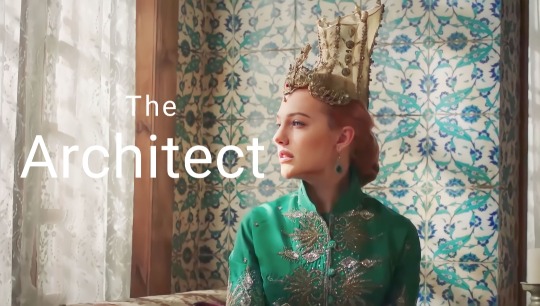

#haseki hurrem sultan#valide sultan#hafsa sultan#nurbanu sultan#history#16th century#magnificent century#magnificent century kosem#ottoman empire#ottomanladies#historical events#sultanate of women#women in politics#women in history#ottoman sultanas#ottoman history#historyedit
59 notes
·
View notes
Text

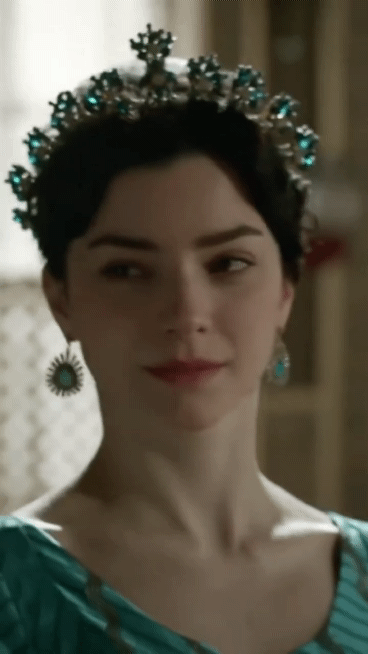
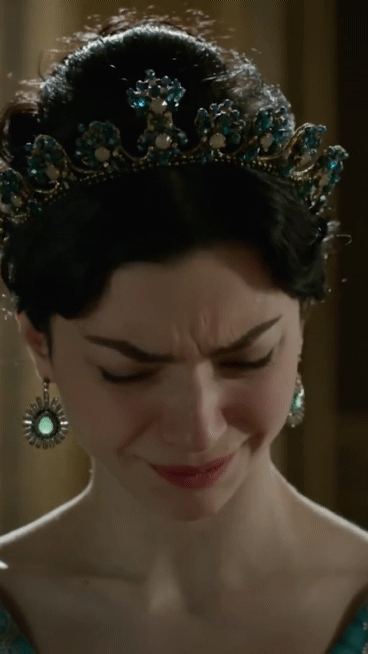
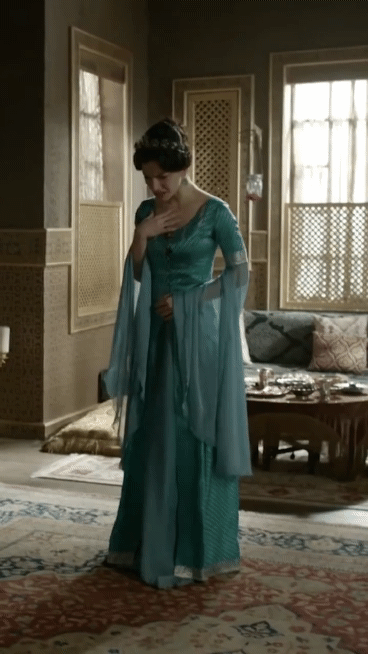
#history#magnificent century#muhteşem yüzyıl#ottoman#sultanas#ottoman sultanas#ottoman history#ottoman valide#valide sultan#nurbanu gifs#haseki nurbanu sultan#nurbanu#nurbanu sultana#nurbanu sultan
35 notes
·
View notes
Text







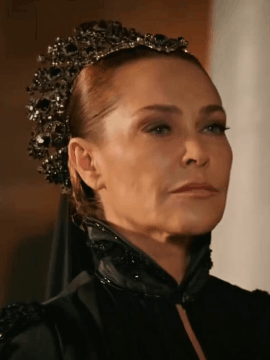

Valide Melike Safiye Sultan Hazretleri (Hülya Avşar) — Magnificent Century Kösem Ep.1
Although there is no definitive information about its origin, there are various rumors. In Venetian sources of that period, it is stated that he was born in the village of Rezi in Dukakin and that he was of Albanian origin. III. Priest Stephan Gerlach, a member of the German embassy in Istanbul during the first years of Murad's reign, says that Safiye Sultan was of Bosnian origin and writes that she was given as a gift to Sultan Murad by Ferhad Pasha during his years as a prince. The information that her father was the governor of Corfu, her real name was Cecilia Baffo, and that she was kidnapped by Ottoman pirates in the Adriatic Sea while traveling between Venice and Corfu and presented to Prince Murad, is not true and stemmed from being confused with Nurbanu Sultan. There is no information about his life before the palace. It is said that it was presented to Prince Murad by Ferhad Pasha. It is said in Venetian sources that he was presented to Prince Murad at the age of thirteen.

Period of Rule: 16 January 1595 - 22 December 1603
Preceding: Nurbanu Sultan
Coming After: Handan Sultan
Death: 10 November 1605 or January 1619 Istanbul, Ottoman Empire
Birth: 1550(?) Dukagjin, Albania
Burial: III. Murad Tomb, Hagia Sophia Mosque, Istanbul
Spouse(s): III. Murad
Child(ren): III. Mehmed, Hümaşah Sultan, Ayse Sultan, Fatma Sultan
Dynasty: Ottoman Dynasty
Religious: She grew up in a Christian family and probably converted to Islam while she was a concubine in the palace.
#safiye sultan#valide sultan#hülya avşar#sultan#magnificent century#muhteşem yüzyıl#muhteşem yüzyıl kösem#magnificent century kösem#muhtesem yuzil kosem#osmanlı imparatorluğu#osmanlı#osmanlı devleti#perioddramaedit#period rp#periodedit#ottoman#periodedits#period drama#perioddramasource#perioddramagif#period
30 notes
·
View notes
Note
i acknowledge that this is a repetitive question, but i'm curious about how would you rank the SOW sultanas in the MC franchise based on intelligence.
It's not a repetitive question at all! Anyway all of this relies on how you define intelligence if you ask me. How do things like making mistakes that cost you but bouncing back learning from them, impulsivity, raw success and other such qualities.
Mahidevran Sultan: She very often gives Mustafa fairly good advice. But the strategies that she herself acts on usually aren't that well thought out. She's no fool but she also isn't the smartest sultana by far.
Hürrem Sultan: She is very often, at least at first, hampered by her own hotheaded and impulsive tendencies. But she can be very observant and very quickly learns how to use the things that she picks up on to her advantage. She is very strategically adept and very good at reading people. Not to mention her own character growth and evolution clearly showing her comparative self-awarness and ability to learn and adapt. Most of her failures, especially later on, hinge on the fact that she is genuinely caught between a rock and a hard place. Easily the majority of her errors are forced.
Nurbanu Sultan: She too can be hotheaded but she also learns quickl and thinks on her feet. The only problem with analysing her is the fact that we only have one season of her and don't ever see her as Valide. So there's crucial steps to her development and evolution that we miss out on. Which makes judging her significantly harder than judging say Hürrem or Mahidevran.
Safiye Sultan: Disclaimer that I haven't seen MC:K In a while but she's another character who is hard to judge just because we miss out on so much of her development. She's clearly very intelligent and able to wield power. But very often what we see of this comes down more to the threat of violence than it does to traditional harem scheming per se. But she is very astute especially when it comes to diplomacy.
Handan Sultan: Her intelligence wasn't what stood out to me about her. It was her anxiety.
Halime Sultan: She was clearly quite intelligent and had a mind for schemes but she was severely hampered by desperation and being caught between a rock and a hard place.
Kösem Sultan: She learns a lot and learns quickly although early on especially she could be naïve. But particularly season 2 Kösem was politically one of the most adept characters in the show. You don't get to where she got without having a good head of braincells. And when she makes mistakes it's usually due to arrogance or desperation rather than anything else.
Turhan Sultan: I mean she is ruthless so I'll give her that much...but once again my ability to properly analyse her characterisation is the utter lack of characterisation that she gets which is lost to the criminal amount of timeskips that we got towards the end of season 2 of MC:K.
2 notes
·
View notes
Text
osmanlı padişahlarının anneleri, genellikle “valide sultan” unvanı taşıyan önemli figürlerdi. hem saray içerisindeki hem de devlet yönetimindeki etkileri büyüktü. işte osmanlı padişahlarının anneleri:
erken dönem (1299–1453)
1. osman gazi: hayme ana (osmanlı'nın kurucusunun annesi).
2. orhan gazi: malhun hatun veya nilüfer hatun (bu konuda bazı tartışmalar vardır).
3. i. murad: nilüfer hatun.
4. yıldırım bayezid: gülçiçek hatun.
5. i. mehmed (çelebi): devlet hatun.
6. ii. murad: emine hatun.
7. fatih sultan mehmed: hüma hatun.
klasik dönem (1453–1603)
8. ii. bayezid: gülbahar hatun.
9. yavuz sultan selim: gülbahar hatun (amasyalı).
10. kanuni sultan süleyman: hafsa sultan.
11. ii. selim: hürrem sultan.
12. iii. murad: nurbanu sultan.
13. iii. mehmed: safiye sultan.
14. i. ahmed: handan sultan.
15. i. mustafa: halime sultan.
16. ii. osman (genç osman): mahfiruz hatun.
17. iv. murad: kösem sultan.
18. i. ibrahim: kösem sultan.
geç dönem (1603–1922)
19. iv. mehmed (avcı mehmed): turhan sultan.
20. ii. süleyman: saliha dilaşub sultan.
21. ii. ahmed: hatice muazzez sultan.
22. ii. mustafa: emetullah rabia gülnuş sultan.
23. iii. ahmed: emetullah rabia gülnuş sultan.
24. i. mahmud: saliha sultan.
25. iii. osman: şehsuvar sultan.
26. iii. mustafa: mihrişah sultan.
27. i. abdülhamid: rabia şermi sultan.
28. iii. selim: mihrişah sultan.
29. iv. mustafa: ayşe sineperver sultan.
30. ii. mahmud: nakşidil sultan.
31. abdülmecid: bezmialem sultan.
32. abdülaziz: pertevniyal sultan.
33. v. murad: şevkefza sultan.
34. ii. abdülhamid: tirimüjgan sultan.
35. mehmed reşad (v.): gülcemal kadın.
36. mehmed vahdettin (vi.): gülüstü hanım.
notlar
• osmanlı annelerinin çoğu, özellikle son dönemlerde, köken itibarıyla yabancıydı ve genellikle cariye olarak saraya girmişlerdi.
• osmanlı sarayında “valide sultan”lık, padişahın annesi için güçlü bir konum sağlardı; bu nedenle devlet yönetiminde ve saray hayatında önemli roller üstlenmişlerdir.
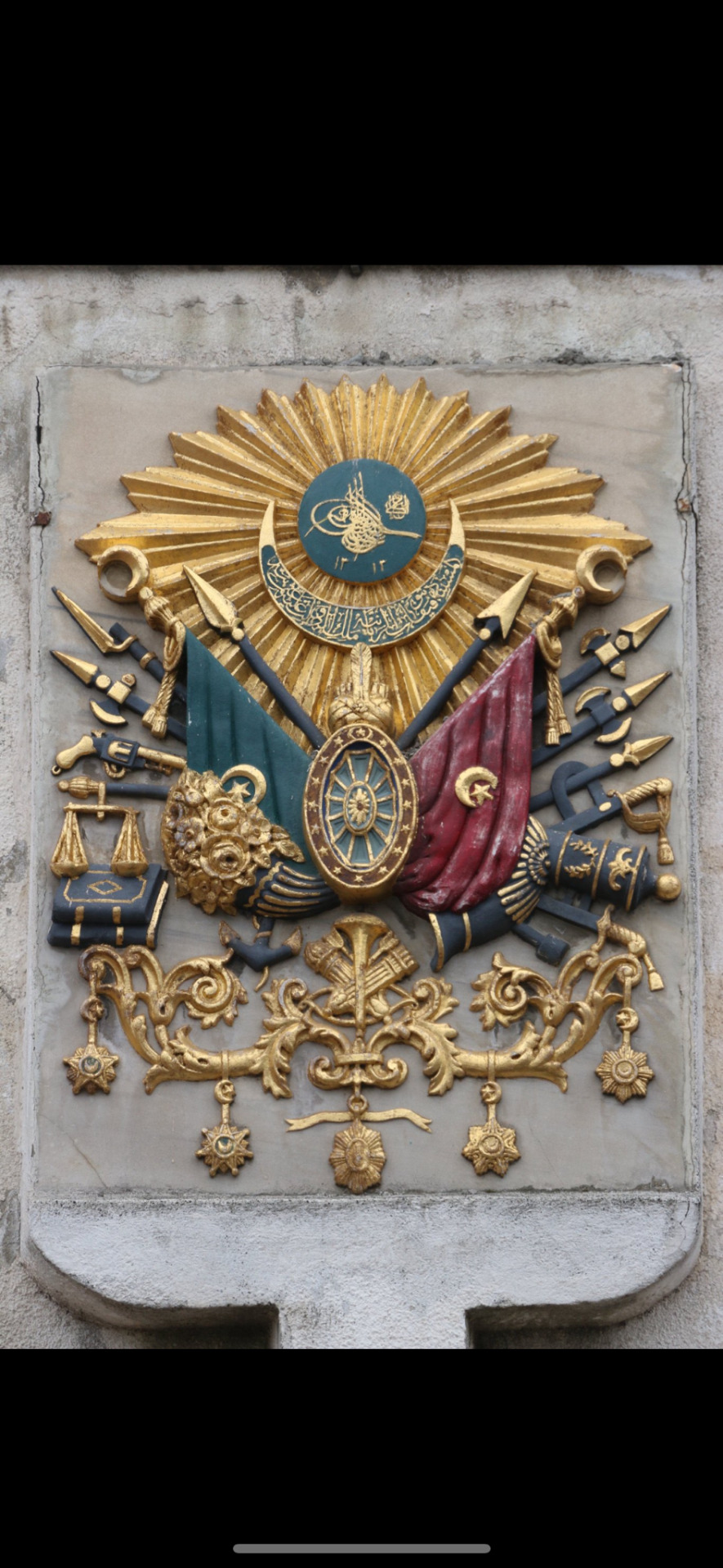
0 notes